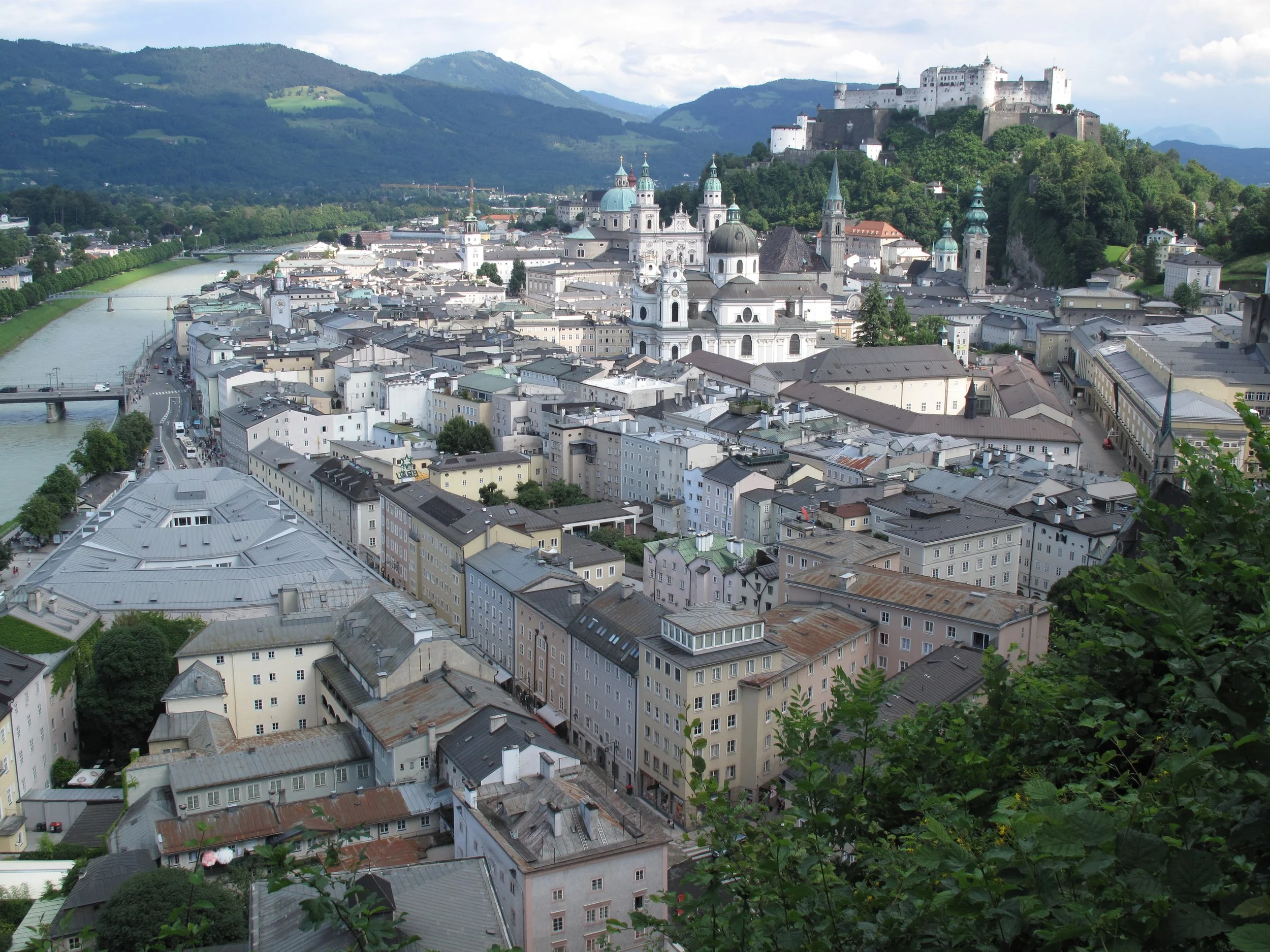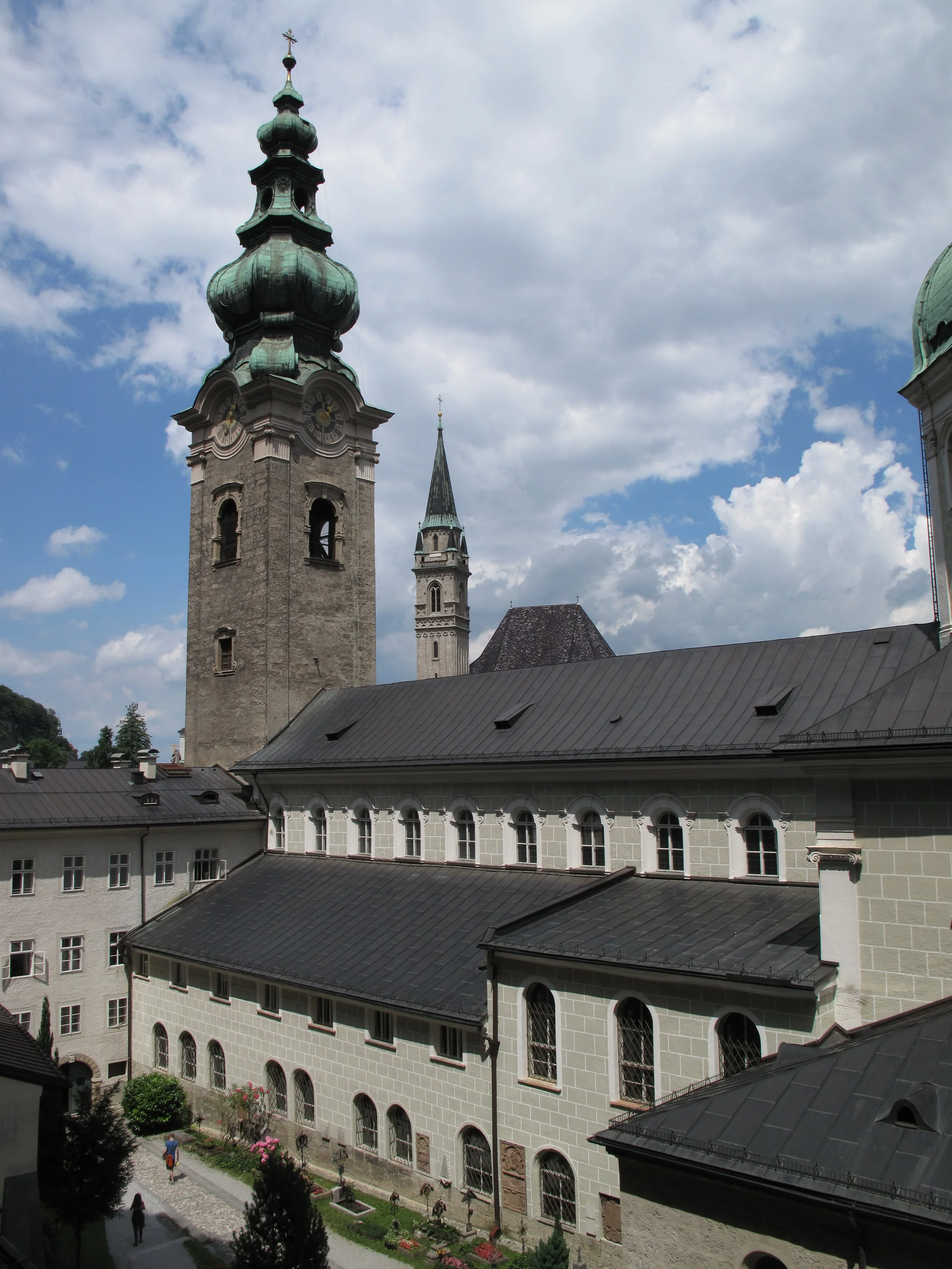Austria. Scenic Salzburg, Imperial Vienna
Salzburg and Vienna are two of my favorite cities in Central Europe. With gorgeous baroque architecture and stunning mountain landscapes, Salzburg was featured in the 1965 movie, The Sound of Music. Vienna is more formal with ornate gardens, broad open spaces, and performance venues. For full disclosure, I visited the two cities on separate trips. I drove to Salzburg in a rental car. The city is located about 300 kilometers west of Vienna on the River Salzach and a short distance from the Northern Alps. The city’s Old Town of Altstadt has several Baroque towers and churches. The name Salzburg is derived from salz (salt) and burg (fortified city). Indeed, salt mining played an important role in the city’s development. The city is fourth largest (population 157,000) in Austria and was first settled in the Neolithic age. Later it was occupied by Romans and Roman-Celtic people. Part of the Holy Roman Empire in the 14th century, the city became part of the Austrian Empire in 1850.
Our first stop in Salzburg was Hohensalzburg Fortress, a large medieval castle built on Festungberg Mountain (506m) and the site of a Roman stronghold. Work on the fortresses’ bailey and wooden wall was initiated by Archbishop Gebhard von Helfenstein in 1077. In 1462 the wooden structure was replaced with a curtain wall made from stone that featured towers. Venturing inside a church within the fortress’s walls, it’s possible to see the Salzburg Bull, a mechanical organ with 200 pipes. Measuring 250 meters by 150 meters, Hohensalzburg is among the best-preserved castles in Europe. At one point while walking around Salzburg we found ourselves in Sigmundstor (aka Neutor), a tunnel excavated during the 18th century that runs under Möchsberg Mountain. Today, the 131-meter-long tunnel is used by both vehicles and pedestrians.
Another stop was Nonnberg Abbey, a Benedictine monastery founded in 712 by Saint Rupert that is the oldest continuously operating nunnery in the German speaking world. Many know it from The Sound of Music. The movie’s central figure, Maria Auguste Kutschera (later Maria von Trapp), was a postulate (candidate to become a nun) there in 1924. St. Paul’s Cemetery (aka Petersfriedhof) appeared in a scene when the von Trapp family is attempting to escape to Switzerland. We walked through the abbey’s church and cemetery. The cemetery is the final resting place of Mozart’s sister and the Austrian composer Michael Haydn (1737-1806). Each morning at 6:45, nuns sing the Gregorian chant in the abbey’s church.
Austria’s capital and most populous city (two million), Vienna is the country’s political, economic, and cultural epicenter. The city has a long history of occupation. Celts built an encampment there called Vedunia and in the 1st century AD the Romans built a military camp on the site. The Roman city of Vindebona was mentioned in the writings of the 2nd century geographer, Ptolemy. Hapsburg emperors of the Holy Roman Empire lived in the city during the 16th through 18th centuries and by the late 19th century, the city was recognized as a focal point for European culture and home to famous composers such as Johannes Brahms and Richard Strauss. Following Germany’s annexation of Austria, Vienna was occupied by Nazi forces and after the war it was administered by the Allies. In 1955, a treaty was signed in Vienna that restored the country’s status as a sovereign state. Today, tourists come to the “City of Music” to attend concerts featuring classical music.
After an extensive walking tour of the city, my companion and I stopped at a beer garden where we sampled Budweiser Budvar, a Czech beer first produced in 1897. It turns out that Budweiser sold in the Czech Republic isn’t related to U.S.-made Budweiser bottled by Anheuser-Busch. There is no love lost between the two beer producers; a dispute over the Budweiser name has been ongoing since 1907. After finishing our beverages we walked past Mozart Monument, a 7.5-meter-tall statue created by sculptor Viktor Tilgner in 1896. Constructed using Laas marble, it features Mozart at a music stand adorned with figures from his opera, Don Giovanni.
Completed in 1737, Charles Church (aka Karlskirche) is dedicated to St. Charles Borromeo, a leader in the Counter-Reformation who assisted plague victims. With a central dome flanked with tall white columns, the structure combines Greek inspired elements with Roman Baroque designs. Vienna’s strangest building is Hundertwasserhaus, an apartment complex completed in 1985. The building was designed by architects Friedensreich Hundertwasserhaus and Joseph Krawina to emphasize harmony between people and nature. With colorfully painted exterior walls, the structure has undulating floors, tree limbs that extend from windows, and living vegetation inside rooms. Some doors and windows have uneven sizes and alignment. In explaining his work, Hundertwasserhaus noted, “I want to show how basically simple it is to have paradise on earth.”






